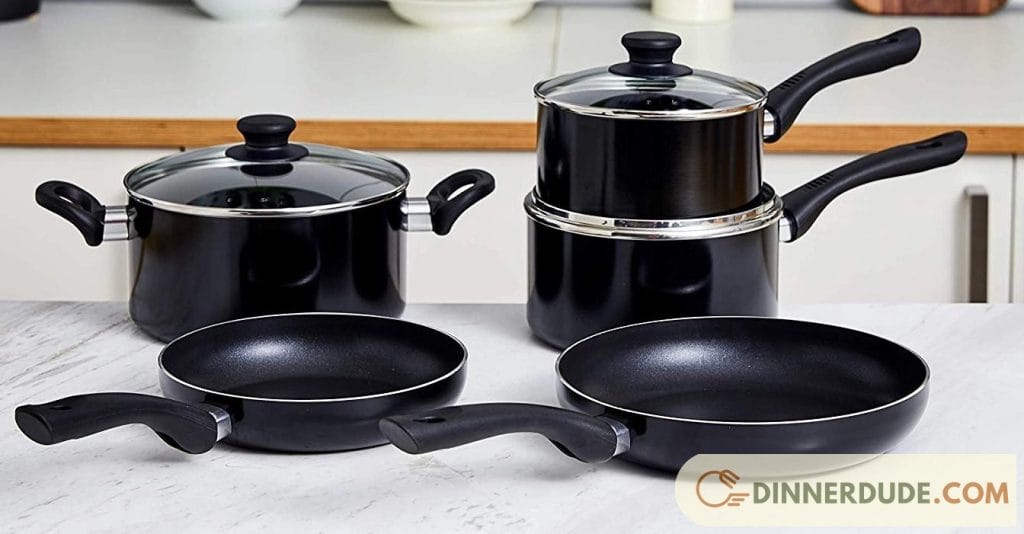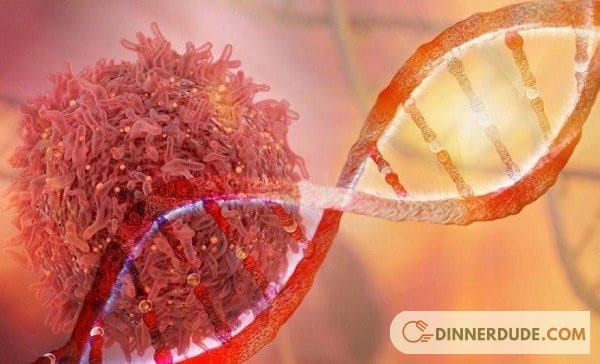The potential link between nonstick cookware and cancer has been a subject of concern and debate in recent years. Nonstick cookware is widely used in households for its convenience, but questions have been raised about the safety of the chemicals used in its production, particularly per- and polyfluoroalkyl substances (PFAS).
Does nonstick cookware cause cancer? In this exploration, Dinnerdude delves into the current scientific understanding to examine whether there is a credible connection between nonstick cookware and an increased risk of cancer.
Does nonstick cookware cause cancer?
While there have been concerns about the potential health risks of nonstick cookware, it’s important to understand the current consensus among health organizations.

The Stance of Health Organizations on Nonstick Cookware
According to the American Cancer Society, while PFOA has been linked to certain health problems, the risk from using nonstick cookware is considered to be low.
The U.S. Food and Drug Administration (FDA) also states that PTFE is safe for cooking use provided it is not overheated.
Do nonstick cookware ingredients raise the risk of cancer?
Concerns about nonstick cookware and cancer risk have nothing to do with Teflon. This danger is associated with perfluorooctanoic acid (PFOA), a chemical used in the manufacture of Teflon.
Although PFOA was once used to manufacture Teflon, all Teflon-branded products have been PFOA-free since 2013. Although some studies suggest a link between PFOA and cancer, the link between Teflon and cancer is completely unfounded.
We must understand why PFOA is of interest and why it is no longer used in the production of Teflon. PFOA can contaminate soil, water, and air during the production of Teflon nonstick coating, and its presence in the environment and human body is very long.
Studies involving high-risk groups exposed to PFOA frequently yield mixed results.
Furthermore, exposure to polyfluoroalkyl-PFAS substances (a broad category that includes PFOA) may increase the risk of the following cancers: Bladder cancer, kidney cancer, ovarian cancer, prostate cancer, and testicular cancer are all examples of cancers.

Do nonstick pans or pots pose any other health risks?
Consumers who are exposed to fumes produced by nonstick-coated utensils for an extended period may develop flu-like symptoms such as headaches, chills, and fever.
This frequently involves the use of utensils such as nonstick pots at extremely high temperatures for extended periods.
This condition is harmless, and symptoms usually go away within 12 to 48 hours of being exposed to smoke. These symptoms, however, can be severe in people who have pre-existing cardiovascular or respiratory conditions.

Balancing the Benefits and Risks of Nonstick Cookware
Nonstick cookware offers several benefits, including easy cleanup and the ability to cook with less oil. However, like any product, it’s important to use it correctly to minimize potential risks.
By following the manufacturer’s instructions, using appropriate cooking temperatures, and replacing worn-out pans, you can enjoy the convenience of nonstick cookware while ensuring your safety.
Guidelines for Using Nonstick Cookware Safely
Understanding how to use nonstick cookware safely and recognizing when it’s time to replace these items can significantly mitigate potential health risks.
This section will provide guidelines for using nonstick cookware and discuss the current consensus on its link to cancer.
Nonstick cookware, when used correctly, offers a convenient and efficient cooking experience. However, certain precautions should be taken to ensure safety.
Appropriate Cooking Temperatures for Nonstick Cookware
The key to safe use of nonstick cookware lies in managing the cooking temperature.
Polytetrafluoroethylene (PTFE), the coating that gives the cookware its nonstick properties, can start to decompose at temperatures above 500 degrees Fahrenheit (260 degrees Celsius), releasing fumes that can cause flu-like symptoms.
Therefore, it’s recommended to use low to medium heat for cooking with nonstick pans. Avoid preheating an empty pan and refrain from using nonstick cookware for high-heat methods like broiling or searing.
When to Replace Your Nonstick Cookware
Over time, the nonstick coating can wear down and chip away, especially if metal utensils are used. Consuming flakes of this material isn’t known to cause health problems, but a damaged surface may release more fumes when heated.
Therefore, it’s advisable to replace your nonstick cookware when it shows signs of wear and tear, such as scratches or chips in the coating.

In conclusion, while the safety of nonstick cookware is a topic of ongoing research and discussion, current evidence does not definitively establish a direct link between its use and an increased risk of cancer.
It is crucial for consumers to stay informed about the materials used in their cookware, and for regulatory bodies to continue monitoring and updating safety standards.
Ultimately, adopting a balanced approach to cooking practices, such as using nonstick cookware responsibly and choosing alternatives when appropriate, can contribute to overall kitchen safety and well-being.